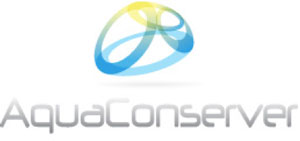 Éasca is a consortium partner in the AquaConserver project that was funded by the European Commission as part of the Framework Seven SME scheme. The AquaConserver concept addresses the twin problems of energy and water conservation faced by all citizens of the EU27 and offers Europe’s leading Plumbing SME Associations an opportunity to bring a new demand-led offering to our customers, requiring high levels of expertise and training to install correctly and efficiently.
Éasca is a consortium partner in the AquaConserver project that was funded by the European Commission as part of the Framework Seven SME scheme. The AquaConserver concept addresses the twin problems of energy and water conservation faced by all citizens of the EU27 and offers Europe’s leading Plumbing SME Associations an opportunity to bring a new demand-led offering to our customers, requiring high levels of expertise and training to install correctly and efficiently.
Our concept involves the development of a low cost, water recycling system that can be retro-fitted to 90% of domestic dwellings. It is capable of the re-use of showering and bathing water thereby saving up to 50% of personal washing water usage and >50% of the associated heating energy usage AND it is capable of re-using filtered grey water from bathing/showering for toilet flushing thereby saving up to 35% of overall household water usage.
A recent study commissioned by the EC illustrates that water efficiency can be improved by nearly 40% through technological developments alone and that changes in human behaviour could increase these savings even further. The EC has therefore launched several initiatives such as the Water Framework Directive and the Communication on Water Scarcity and Droughts (July 2007) that proposes widespread promotion of domestic water saving technologies (ie water saving showers, grey water systems) and a ‘user pays’ tariff system, which is likely to result in significantly higher water prices in the future. At the same time several Member States are implementing guidelines and policies to reduce usage.
Éasca is a consortium partner in the HIP project, an EC Framework 7 funded research project, with the title of ‘Development of low cost, lightweight, highly insulating Polymers for refrigerated transport, heating and cooling installations’. We are a consortium of SME's and SME Association Groups working together for 36 months to develop an innovative new class of polymer insulation materials based on high internal phase emulsion templating (HIPE).
Project Goals
Currently the options for insulation materials are limited, therefore the key objective of the project is to develop an insulation material that can bridge the performance gap between expensive high performance materials such as aerogels and vacuum insulation panels and the low cost but poorly performing foams.
Our insulation material needs to offer high thermal resistance but at a cost close to insulating foams. High internal phase emulsion (HIPE) materials allow close control over porosity, pore size distribution and mechanical properties.
September 2012 marked the end of Period 2 in the HIP project. The consortium continue to collaborate well and the development is on track to achieving the objectives by the end of summer 2013.
Éasca was a consortium partner in the 3-year SmartHeat project, which was funded by the European Commission as part of the Framework Seven SME scheme and aimed to develop a modular system for space and water heating in houses that would utilise renewable energy sources.
The final project meeting of the SmartHeat project took place in Ankara, Turkey in January 2013. The project ran for three years and involved a range of organisations from across Europe. Prototype systems are now installed in Spain and Turkey. In addition, prototype systems are also being run under various scenarios as demonstration and training rigs in the UK and Germany. Although the project ends this month, the field trial sites will continue to provide additional data for the near future.
The project has shown that non-water based energy stores can be utilised with various renewable sources. By utilising the latent heat of a suitable phase change material compact stores can be produced that are more easily accommodated in compact homes. To exploit the potential of storing renewable energy a sophisticated control system has been developed that takes into account the level of energy available, the cost of providing heat from the available sources (including non-renewables) and the predicted heat demands. The control system acquires room temperature data from multiple wireless sensors and communicates via the existing power circuits. The modularity of the system enables it to be expanded over time as resources become available.
One of the developments that has come out of the project is a colour coding system for pipework and fittings in heating and hot water systems with multiple heat sources. A document explaining the colour coding can be downloaded from the SmartHeat website.
The development of the SmartHeat system was undertaken by the following research and development establishments on behalf of the SMEs:
- The Intelligent Systems Research Institute (ISRI)
- Stuttgart University (ITW)
- Georgia Tech Ireland (GTI)
- Ikerlan